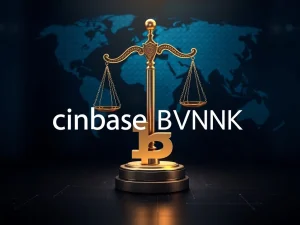Unlocking SocialFi’s Potential: Why Decentralized Social Networks Struggle and What’s Next

SocialFi, the concept aiming to revolutionize social media by giving power back to users through blockchain technology, has faced significant challenges in achieving widespread adoption. Despite the compelling vision of user ownership, data control, and direct monetization, platforms built on the principles of Web3 Social have largely failed to attract and retain mainstream users. Why is this promising sector currently struggling, and what crucial changes are needed for SocialFi Adoption to become a reality?
Understanding the Current State of SocialFi Adoption
On paper, SocialFi presents a compelling alternative to the dominant Web2 social media giants. It promises users control over their content and data, along with a stake in the lucrative social media advertising market. Yet, many existing SocialFi platforms feel like digital ghost towns compared to the bustling activity on platforms like Meta or TikTok. Friend.tech, once hailed as a breakout success, saw its daily active users plummet dramatically after an initial peak.
The core issue isn’t a lack of enthusiasm from the Web3 community or a flaw in the fundamental promise of user ownership. Instead, deep structural problems are bottlenecking growth and preventing mass adoption of Decentralized Social Networks.
The Technical Hurdles Facing Blockchain Social Media
A primary obstacle for Blockchain Social Media platforms is the underlying infrastructure. Traditional social media demands incredibly high transaction throughput and near-instantaneous responses for actions like posting, liking, or following. These actions generate hundreds of millions of daily transactions on Web2 platforms. However, current blockchain technology struggles to keep pace:
- Ethereum handles only 15-20 transactions per second (TPS).
- Even high-performance chains like Solana, at around 5,000 TPS, fall far short of the demands of a global social network.
- Compare this to TikTok’s 25 million daily video uploads or X’s 500 million daily posts.
Users accustomed to instant feedback are met with significant delays (potentially 30 seconds or more) and unpredictable gas fees (ranging from cents to tens of dollars during congestion) when trying to interact on many SocialFi platforms. This technical friction makes mass adoption nearly impossible.
Why User Experience is Critical for Web3 Social Success
Web2 giants invest billions annually in research and development to create platforms with addictive simplicity. Their user interfaces are designed to make the technology disappear, focusing solely on the user experience. TikTok’s algorithm, for instance, delivers content so seamlessly that it captures users immediately upon waking.
In stark contrast, many early Web3 Social platforms present new users with intimidating elements like wallet popups, complex crypto terminology, and variable transaction fees. A 2023 study highlighted this barrier, finding that a vast majority (92%) of SocialFi users abandon platforms within 30 days. Until SocialFi applications can match the frictionless experience of their Web2 counterparts while offering unique advantages, adoption will remain limited to crypto-native individuals.
The Fragmentation Problem Hinding SocialFi Adoption
The multichain nature of Web3 has inadvertently led to significant fragmentation within the SocialFi space. Different protocols and platforms exist in silos, preventing the critical network effects that power Web2 social media:
- Lens Protocol’s social graph is separate from Farcaster’s.
- Monetization tools on Friend.tech don’t seamlessly transfer to other platforms like DeSo.
Imagine if Gmail users couldn’t easily email Outlook users or bring their contacts and messages with them – that’s the current reality for many users attempting to navigate the fragmented SocialFi landscape. To overcome this, there’s a need for interoperable identity systems and emerging standards that enable portable, composable social graphs. A user’s content, followers, and reputation should ideally travel with them across different applications, benefiting the entire ecosystem, not just one isolated platform.
Building the Right Foundation: Purpose-Built Infrastructure for Blockchain Social Media
Solving SocialFi’s adoption challenges requires more than just incremental tweaks to existing models. It necessitates purpose-built infrastructure specifically designed to handle the unique demands of social applications. Just as horizontal scaling transformed Web2 infrastructure, modular blockchain architecture is paving the way for social applications that can scale to billions of users. This approach separates concerns like data availability, execution, and settlement, creating a robust foundation.
This shift is already happening. Platforms like Farcaster have migrated to Layer 2 solutions (Optimism) to prioritize low-cost interactions. Lens Protocol is exploring scaling solutions like ZKsync. CyberConnect has launched Cyber, its own Layer 1 chain optimized for social applications, enabling faster, cheaper interactions with an embedded social graph. These developments mirror how Web2 scaled by separating different layers – Web3’s version involves modular components like rollups for performance, decentralized storage for media, and identity layers for portability.
Unlocking SocialFi’s True Potential with User-Centric Design
When built on the proper technical foundation, SocialFi can finally deliver on its core promise: putting users back at the center. This means:
- True ownership of identity and content.
- Portable social graphs that work across various applications.
- Fair value distribution to the people who create and curate content.
The opportunity extends beyond merely fixing the flaws of Web2. True ownership empowers creators to retain control and seamlessly port their audience between platforms. Programmable money opens doors to innovative monetization models – imagine viral trends where a percentage of ad revenue is automatically split among participating creators. Combining programmable money with social connections enables new interaction types, from effortless tipping for quality content to automated revenue sharing for collaborative projects.
Conclusion: The Path Forward for Decentralized Social Networks
Early iterations of Decentralized Social Networks have struggled to gain significant traction beyond the crypto sphere due to fundamental technical and user experience barriers, alongside fragmentation. Addressing these issues head-on by developing purpose-built infrastructure and prioritizing seamless, user-centric design is crucial. If these challenges are overcome, SocialFi has the potential to offer unique, disproportionate advantages over established platforms, finally delivering on its promise of a user-owned, value-sharing social media landscape and driving significant SocialFi Adoption in the future.
Opinion by: Anurag Arjun, co-founder of Avail. This article is for general information purposes and is not intended to be and should not be taken as legal or investment advice. The views, thoughts, and opinions expressed here are the author’s alone and do not necessarily reflect or represent the views and opinions of Crypto News Insights.







